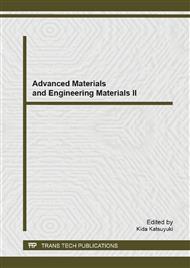p.431
p.435
p.439
p.444
p.453
p.457
p.464
p.468
p.474
Research on the Super Rapid Strength Repairing Material Effects Resistance to Water Damage Performance of Cement Stabilized Macadam
Abstract:
As the strength of the cement stabilized macadam forming requires sufficient long time, it seriously affects the service and maintenance of the road. This paper studies on early unconfined compressive strength and resistance to water damage properties of cement stabilized macadam mixing with super rapid strength repairing material. The results show that early unconfined compressive strength of cement stabilized macadam has been significantly improved through mixing with super rapid strength repairing material. This provides favorable condition to opening traffic quickly. In contrast to ordinary cement stabilized macadam, the resistance to hydrodynamic damage properties of super rapid strength cement stabilized macadam has been significantly improved,but no significant improvement in the softening coefficient.
Info:
Periodical:
Pages:
453-456
Citation:
Online since:
April 2013
Price:
Сopyright:
© 2013 Trans Tech Publications Ltd. All Rights Reserved
Share:
Citation:


